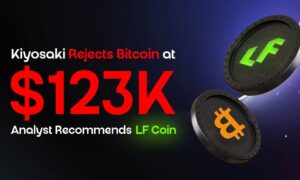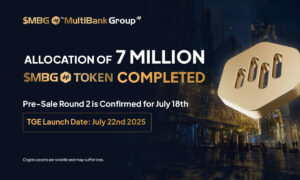Once blockchain signaled its presence in early 2008, it instantly became clear that this technology was going to take part in the next revolutionary breakthrough. One that has been so ardently waited for since the invention of the internet.
Having the potential to become a flagship technology of the whole generation, the revolutionary essence of blockchain lies in its ability to disrupt not only the technological side of human life but also overturn fundamental societal assumptions and revise the philosophy our era is guided by.
Firstly, this concerns the centralized form of organization: as a ledger-based technology, blockchain promises to take a radical shift away from the dominant mode of governance with its top-down hierarchical structure – the one undermining its own success through self-imposed limitations on the part of decision-making. Instead, the open and decentralized form of blockchain postulates a new era of creativity, collaboration, and community-driven idea-sharing. This is unrestrained across the whole network of nodes, each one of which is seen as a valuable contributor and a decisive voice in one shared undertaking – making the world a better place. On this quest, developers and entrepreneurs are encouraged to assemble and, together, create something the next generation will treasure them for.
That is why Lisk, the blockchain application platform, came up with the idea of setting up a shared space for all entrepreneurs and developers scattered across the corners of the vast decentralized space. The Lisk Grant Program plays instrumental importance in realizing this plan: the initiative is meant to ignite the enthusiasm of all independent industry players through a 60,000 CHF grant (paid out in LSK tokens) to all those who agree to partake in the creation of blockchain applications on an accessible and JavaScript-based software development kit, Lisk SDK. Taking a meaningful part in driving forth the whole blockchain enterprise.
Mona Bärenfänger, a part of the Lisk Grant Program, is here to devote us to all nits and grits of the upcoming initiative launch in this comprehensive interview with TechBullion.
Let’s begin with the question – why should developers turn their attention to the Lisk Grant Program? Who is this program meant for?
The Lisk Grant program is offering initial funding for developers and entrepreneurs who have innovative ideas for applications that use blockchain technology in a meaningful way. It is especially interesting for experienced (JavaScript) developers who are relatively new to the blockchain space because the Lisk SDK makes it very straightforward to get started with the actual development of the application, as the general development experience and tools are very similar to the development of a general web application.
At the same time, it is also interesting for developers who already have some experience in development with smart contracts or other decentralized applications if they experience certain limitations for their application or if they wish to improve certain aspects of the user- or developer experience. A reason to switch to Lisk could be, for example, the lower transaction fees from the user’s perspective. Or, from the developer’s side – the modular architecture of the Lisk SDK that allows designing the blockchain with the optimal parameters required for the desired application.
If you already have a team and an innovative idea for an application using blockchain technology, and what you lack is funding and promotion of your project, then the Lisk Grant Program is right for you.
The question I’ve been reflecting on: if blockchain is a good choice on its own, why should Lisk, and not other protocols in the space, grasp the developers’ eye?
Lisk’s mission is to make blockchain accessible for end-users as well as for developers. This reflects, for example, on the tools we offer developers to realize their projects and ideas.
We focus on improving the development experience in a way that simplifies the difficult and cumbersome parts of the development, so developers can focus on their particular business logic. At the same time, we offer a fully modular architecture for blockchain applications that is flexible and customizable in any way if desired by the developer.
And how does Lisk encourage participation in the blockchain applications building process? What are the most important aspects to be considered when convincing developers to pick a particular project from the blockchain space?
One important thing to mention is that with Lisk, every application is running on its own blockchain. This blockchain can be connected to the Lisk Mainchain by registering as a sidechain. This will make it interoperable with any other sidechain in the Lisk ecosystem.
This offers the possibility to tweak the properties of the blockchain for a particular application by decreasing the block time or changing the consensus algorithm, as an example. At the same time, the application can still communicate safely with other applications in the network without being impacted negatively by the other applications due to hacks or rising transaction fees happening in other applications.
Another important aspect of making blockchain accessible is that Lisk is developed completely in JavaScript/TypeScript. As most developers are familiar with Javascript at least a little, it is not required to learn a new language, and the learning curve is generally less steep compared to other protocols.
Apart from the technical aspects, we must mention the supportive and very knowledgeable Lisk community and the extensive documentation, which is ever-evolving.
All these aspects combined make Lisk a very attractive choice for developers.
What are the specific initiatives that Lisk undertakes to encourage developers to join its ecosystem?
At Lisk, we try to reach out to any developer who is interested in developing blockchain, especially JavaScript developers, particularly those who are relatively new but interested in blockchain. That’s why we speak at developer-focused conferences and events and join AMAs and interviews of different developer communities to introduce new developers to blockchain and Lisk.
We believe that we as the industry are still in the beginning stages of discovering how blockchain technology can be used to develop the next generation of web applications and to accelerate this process. Hence, it is crucial that many people get their hands on the technology and practically try it out. That’s why we try to spread the word as much as possible.
Additionally, we organize events and competitions for the Lisk community and especially the developers, like online hackathons or our annual event Lisk.js. Last but not least, the Lisk Grant Program itself is one of our main initiatives to financially incentivise blockchain developers to join the ecosystem.
What is Lisk primarily looking for in terms of blockchain applications to be built by the community and newcomers? Among the most trending ones, are there any going beyond DeFi, DAO, and NFTs?
In general, we are happy to see projects which solve existing real-world problems by applying blockchain technology in a meaningful way. We are looking forward to receiving all kinds of creative and innovative ideas and encourage developers specifically to think outside the box and surprise us with some new and original application ideas.
If you do not have the right idea on your own, it might be a good approach to look into other platforms for decentralized applications and their existing and successful projects. Some projects might be worth existing on the Lisk ecosystem as well or could even be realized in a better and/or easier way on the Lisk blockchain.
Can we quickly go through the current participants – those who were lucky enough to join the Grant Program? What are their main, most exciting features?
So far, the following projects have been accepted in the Lisk Grant program:
- Enevti: a social NFT platform to help fans build an authentic relationship with their favorite influencers. Enevti introduces redeemable NFTs with specific utility – for example, giving access to exclusive content from the creator. Enevti aims to innovate Creator Finance (CreaFi), a fair and open financial instrument between fans and NFT creators, without intermediaries, that aligns token staking and NFT royalty distribution as financial incentives driven by social perceptions, such as popularity, creativity, supportability, and authenticity.
- Kalipo: a DAO platform to support online collaborations with the right tools, helpful insights, and pre-made templates. You can manage your entire organization online: Register a DAO, create votings, and manage the organization funds.
- Colecti: a Lisk-based NFT marketplace. A place where you can buy, sell and create digital collectibles and non-fungible tokens. Colecti’s goal is to become the bridge between all Lisk NFT related blockchain applications.
- Idntty: that aims to democratize electronic signatures and identities. Its three main features are:
- digital Id: Create your own digital id that only you can manage. Make your own decisions about who has access to your private data.
- eSignature: Use an unlimited digital signature and control which documents are signed with it.
- Toolchain: Use an out-of-the-box open, decentralized infrastructure for integrating and creating your own applications.
- RGB: World First NFT Collaboration Platform. RGB enables the crowdsourcing of NFT art by bringing together people from many walks of life and creating raw, emotional, and impactful pieces that reflect the rapidly-evolving niche cultures of today’s interconnected world. RGB is rewarding all contributors proportional to their contributions to the NFT.
- Neatbox: a distributed, securely encrypted blockchain cloud storage solution. Neatbox features a zero-knowledge cloud storing system based on IPFS. Neatbox allows users to earn tokens by renting storage space to other users. To simplify the process for users, they offer the Neatbox Box, a hardware device to store the digital assets of users.
- Bazar: Bazar is a decentralized food supply chain platform. A marketplace for sustainably sourced products where buyers, sellers, and suppliers can connect and trade without fees or commissions. Bazar’s blockchain network is built to provide complete traceability of cargo, payments, and smart contracts execution in real-time and without intermediaries.
- Faet: A platform for blockchain games. The Faet blockchain empowers players and developers. Play-to-Earn & Free-to-Play, Staking, Voting, NFTs, and much more. Players will be able to monetize their time, earn a piece of the metaverse, and vote for delegates who have power over the blockchain and the rules of the gameworld.
Lisk Grant Programs consist of four milestones. What are the crucial activities during each phase? How can you ensure that you go through all of them and receive the total funding? Can you share the best practices?
Each Milestone marks particular progress in creating a production-ready sidechain. For completion of each Milestone, the team will get a part of the total funding for the project. That means there are no strict deadlines for the team to reach. How fast they get the funding directly correlates with how fast they make progress in building and releasing the desired blockchain application.
For every Milestone, there are certain requirements to be met. If a team submits a Milestone, it will undergo a review from the Lisk Foundation (of course, if all requirements are fulfilled). If this is the case, the payout for the particular Milestone will be executed, and the team is able to submit the next Milestone whenever they feel ready.
A breakdown of the requirements for each Milestone is listed below:
Milestone 1: Setup – 1,000 CHF in LSK for completion
- Setup the project (name, logo, website, GitHub repository, Twitter profile, Discord channel).
- Publish a blog post covering the team and project on the project’s website.
Milestone 2: MVP – 4,000 CHF in LSK for completion
- Develop an MVP with the latest Lisk SDK covering the essential features of the blockchain application.
- Publish a blog post covering the MVP on the project’s website.
- Conduct a business review by Lisk to receive feedback about the MVP.
Milestone 3: Development – 30,000 CHF in LSK for completion
- For the third milestone, the teams need to propose three goals themselves, for which they can receive in-between financial support.
- Publish a blog post on the project’s website covering each goal’s completion.
- Pass a high-level developer review by Lisk and fix all remarks.
- Launch a public testnet for the blockchain application.
- Publish a blog post covering the testnet launch.
- Keep the testnet running for one month to receive the payout.
Milestone 4: Launch – 25,000 CHF in LSK for completion
- Launch the mainnet for the blockchain application.
- Publish a blog post covering the mainnet launch.
- Register the blockchain application to the Lisk blockchain application platform as a sidechain.
- Publish a blog post about the blockchain application on Lisk.com/blog.
- Keep the sidechain running for one month to receive the final payout.
What do you expect from the next participants of the program? What projects would you like to see joining the program?
A very important answer every project should give is: Why blockchain?
Sometimes we receive applications with nice ideas for applications, but from the presentation, it is pretty clear that blockchain technology is not applied in a meaningful way. A lot of projects like to drop these buzzwords for getting attention or funding, so we are always looking very closely if people really have an innovative and meaningful idea to use blockchain in their application.
At this stage, we are especially interested in applications that provide benefit for the overall Lisk ecosystem and which could also be used by other applications in the network. As the Lisk interoperability is coming soon to the network, it will be crucial to have sidechain applications that create some synergy between different sidechains, like oracle services, stablecoins, ways to create and manage DAOs and privacy-preserving chains, for example.
How do you see the Lisk ecosystem growing in the coming years? What will the future bring?
The real Lisk ecosystem will begin once Lisk completes the Sapphire phase of the roadmap, which means interoperability between sidechains. So once we have reached this stage, I expect that we can see many more projects evolving in the network.
The Lisk ecosystem is currently still at the starting blocks but ready to kick off very soon. It is definitely an interesting time for developers to join the ecosystem in this starting period, as it will give them the advantage of first movers and some additional exposure and funding opportunities.
How many and what kind of projects powered by Lisk we will see in the future is a look into the crystal ball, but I personally think the upcoming months and years will be the most exciting for the overall project so far. We will finally see production-ready real-world blockchain applications in the Lisk ecosystem, which should inspire many new developers to build on Lisk and increase the overall user-base of Lisk drastically.
Last but not least – Is there still a chance to join the Lisk Grant Program? How can anyone apply for this initiative?
The current Wave 4 of the Lisk Grant program is ending on March the 31st, 2022. You can find all the important information about the program and the application process at https://lisk.com/grant-program.
If you read this later, don’t worry, we will soon release more information about the next season of the Lisk Grant program, which will also have an improved application process and more funding options. To receive more information about the upcoming Lisk Grant program, please make sure to subscribe to our newsletter and/or join the Lisk.Chat on Discord.



































